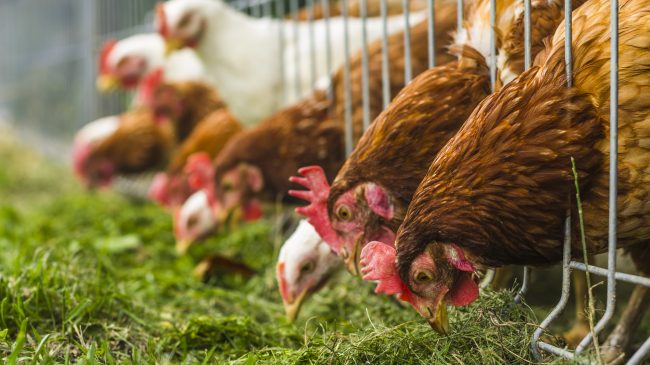California Proposition 12: Establishes New Standards for Confinement of Specified Farm Animals. Bans Sale of Noncomplying Products. Initiative Statute.
Proposition 12 would amend Proposition 2 (2008) to ban the sale of meat from animals confined in areas below certain precise measurements.
Fiscal Impact
There could be potential decreases in local revenues from farm businesses. It could cost approximately $10 million per year to regulate and enforce Prop.12.
Proponents Argument For
Proponents argue that Proposition 2 (2008) was too vaguely written to protect animals. While it stated that animals must have room to lie down and move, it did not list specific area requirements. Proponents claim this vagueness has allowed producers to continue to cram animals into cruel spaces. They say this measure will clean up the law by laying out precisely how much space animals must be provided.
Opponents Argument Against
Opponents claim this is another poorly written law that will not actually protect animals, particularly chickens. They say that while Proposition 2 (2008) did not specify measurements, it mandated enough space to move, lie down, and spread wings, etc., while now Proposition 12 allows much smaller spaces. In particular, they argue that the one-square-foot of space requirement for chickens is still too small.
Opponents also argue that these regulations would cause many farmers to drop out of business, possibly creating a shortage of chickens and eggs, as well as immediately raising the prices of those items.
Discussion
The power of consumer preferences for more humane treatment of animals has transformed the industry with cruelty-free products now offered in virtually every store. Many non-government organizations have created independent standards for the humane treatment of animals. These organizations clearly list the standards they inspect for and carefully certify farm-by-farm so consumers can be confident they are shopping from a humane farm. California consumers can choose to buy only cruelty-free brands and effectively shut out inhumane businesses from the market. Since California consumers have not expressed their preferences that vigorously, these regulations would mandate changes and ignore the market indicators that some consumers seem to care more about the price than the conditions in which animals are kept.
The intentions of proponents of more humane farming are clearly good. But this measure is mired in controversy about disguising a reduction in space for chickens in a measure that purports to be about giving animals more space. Indeed the letter of the ballot measure makes it clear that this would reduce the allowable space for chickens while preserving greater space for pigs and calves. This kind of gaming of the regulatory system is a consequence of trying to resolve these kinds of issues through regulations rather than through consumer preferences.
Voters’ Guide to the 2018 California Ballot Initiatives
The Voters’ Guide offers analysis of each of the 11 ballot propositions certified for the election being held on November 6, 2018.
